Subterranean Termites
- Article
- Subterranean Termites
Subterranean Termites
Scientific Name: Coptotermes, Schedorhinotermes, Nasutitermes, Mastotermes, Heterotermes and Microcerotermes genera.
How to identify a subterranean termites
Members of the Coptotermes genus are easily distinguished from other termites when the soldier is poked or lightly squeezed, upon which a white milky liquid is secreted from a specially modified pore (fontanelle) in the front of the head as a defence mechanism.
Schedorhinotermes is easily identified from other termites in that the soldiers come in 2 sizes. The major soldier is approximately 6mm in length and has a bulbous shaped head whereas the minor soldier is only around 4mm long with a narrower head and more slender mandibles. Identification between species can be difficult however the geography of where they are found can be useful. The most common Schedorhinotermes species that pest managers may encounter can be found below:
Mastotermes is the most ancient living genus in the world and contains only one species: Mastotermes darwiniensis. The large size of the termites and associated galleries in damaged timbers plus where they are found makes identification easy.
Nasutitermes is the most evolutionarily advanced termite genus and can be easily identified by the pointed snout or nasus at the front of the soldier’s head. Identification between species can be difficult; however the geography of where they are found and the presence and type of mound can be useful.
Heterotermes are generally considered less of a threat to timber in service than the afore mentioned genera, however in parts of northern Australia they have caused considerable damage to houses. This termite is often confused with Coptotermes as the soldiers look similar except that the head of the Heterotermes soldier is a more longer and rectangular, compared to the tear drop shape of the Coptotermes.
Microcerotermes The soldier has a rectangular head resembling Heterotermes except for the presence of fine serrations on the inner margin of the mandibles
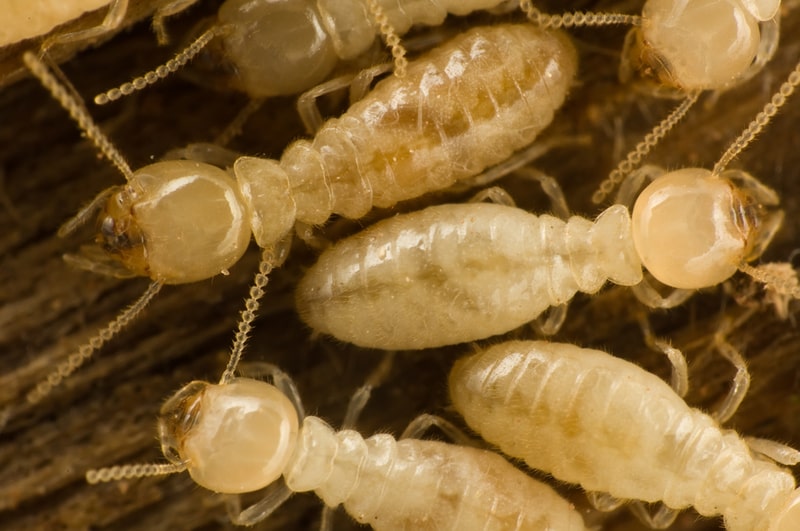
Where are subterranean termites commonly found?
Subterranean termites are mostly ground-dwelling and require soil contact for a source of water (can survive in houses above ground if an internal source of moisture exists). Subterranean termites by far cause the most damage to timber in service in Australia. There are approximately 15-20 species of subterranean termites which commonly attack timber in service throughout Australia
Why are subterranean termites considered a pest?
Termites consume cellulose in one form or another and play a crucial role in nutrient cycling and helping create soil structure through the decomposition of wood and plant debris. They only become a “pest” when they attack timber in service or damage crops and other materials important to humans.
Termites are known to damage materials that have no nutritional value during their search for food. These include rubber, plastic, leather, mortar and some metals. A particularly annoying trait is the attack on underground power cables, with termites chewing through the outer rubber and plastic sheathing, thus exposing the conducting wires to moisture resulting in short circuits and ultimately power failure.
What is the biology and lifecycle of subterranean termites?
Termites metamorphose through egg to nymph to adult. By several moults, the young nymphs then differentiate into one of several castes. This may take several months, depending upon food availability, temperature, and the colony’s vigour. Within a termite colony there are several forms (castes); namely a queen, king, workers, soldiers, and periodically, reproductives. Each caste is structurally different with specific functions to perform for the colony’s survival and maintenance.
Chemicals Required to Control Subterranean Termites
Liquids – The traditional method dating back many decades whereby a chemical is incorporated into the soil surrounding and/or under a structure to prevent termite entry. These can be grouped into either repellent or non-repellent based on their effect on termite behaviour when they contact the treated soil. Repellent products repel foraging termites from a treated structure whereas non-repellent products are undetectable to termites and when they contact the treated soil, they are either killed quickly or pick up a sub-lethal dose(becoming intoxicated) which may allow transfer to other termites away from the treated area.
Dusting – Widely used by pest managers in Australia for many years. Started out with arsenical based dusts followed by more recent chemistry. They are basically a toxicant mixed with a carrier that is blown on to a population of termites. The termites then carry the dust on their bodies to other parts of the colony and transfer the toxicant to non-treated termites and hopefully resulting in colony collapse.
Foaming – A surfactant and termiticide are mixed and delivered directly into active termite infestations under air pressure via a foam generator or a ready to use pressurised “aerosol”. The foam rapidly expands and moves through the gallery system under pressure and can even move upwards to coat as many termites as possible. If using the right active ingredient, foaming can also be transferred away from the site of treatment to effect the population as a whole.
Baiting – Above ground baits containing a matrix of attractive cellulose based food plus a toxicant, are placed over the site of termite activity. If termites are enticed to begin feeding on the bait, the toxicant is introduced into the colony and spread to others. The toxicants of choice at the moment are insect growth regulators (functioning as a chitin synthesis inhibitor), which disrupts the moulting process, ultimately causing death during the process of shedding their exoskeleton.
Baiting Systems – Plastic stations are placed either at regular intervals or in termite conducive areas and filled with an attractive cellulose bait eg: timber material. Once termites are attacking the bait, a matrix of cellulose powder and a toxicant is added to the station for the termites to continue feeding. If termites are enticed to begin feeding on the bait, the toxicant has now been introduced into the colony and spread to others. The toxicants of choice at the moment are insect growth regulators (functioning as a chitin synthesis inhibitor), which disrupts the moulting process, ultimately causing death during the process of shedding their exoskeleton.
Others – There have been a number of attempts to bring new technologies to the market that have either failed or are yet to take off eg: specific fungal strains, nematodes, gel and paste formulations, with more to come in the future.
Management Tips for Subterranean Termites
Pre-construction can be defined as the time period immediately before the actual structure of the house is constructed and is all about prevention.
Building site management – It is a requirement under Australian Standard 3660.1, that prior to any construction beginning, any nest or colony of economically important termites found within 50m of the building site are to be eliminated. Also that any stumps, logs, timber off cuts or any cellulose based waste materials on the footprint of the building be excavated and/or removed.
Physical barriers - The purpose of installing physical barriers is to deter concealed entry by termites into a building. They include sheet metal (traditional “ant caps” and woven stainless steel mesh), chemical barriers in a non-soil matrix (impregnated plastic sheeting, pellets and discs etc), graded particles (stone, glass etc) and the actual concrete slab itself (if poured to the relevant Australian Standard). It must be remembered that termites can easily build around such barriers but their workings are then in the open where they may be detected upon regular inspections and then treated with traditional chemical methods. Physical barriers are required to last the nominated life of the house.
Liquid treated zones – Have a similar purpose as physical barriers in that they deter concealed entry by termites into a building but have the extra advantage in that if installed correctly, can make it very difficult for termites to build around the treated zone. These are installed as either horizontal or vertical zones which involve incorporating the chemical into the soil via trenching, hand spraying and other various methods such as piped reticulation. Chemical treated zones are designed not to last the life of the house and must be replenished at intervals as stated on the product label.
Post-construction - refers to any time period after the completion of the house and treatment can consist of either curative, preventative or both management techniques.
Curative – Also referred to as a “Stage 1” treatment and is designed to rid the structure of active termites to limit the amount of damage and if possible, eliminate the colony from which the termites were originating from. Curative treatments are not meant to be stand alone treatments and should be followed up with a preventative treatment as soon as termite elimination has been confirmed in the structure.
Preventative – A “Stage 2” treatment to follow up from a successful curative (Stage 1) treatment or in a structure that did not have a live termite infestation.
Pest Managers should not solely focus on the structure for helping prevent termite attack. Every medium to large tree in the surrounding yard should be drilled and checked for termite nests. Any activity of economically important species should be treated with a dust, foam or liquid termiticide. Aggregation devices in conducive areas (gardens close to the structure, wet areas etc) around the structure are also helpful to get large numbers of termites to facilitate a dust or foam application. Other activities that pest managers can advise homeowners to undertake to help reduce the risk of termite ingress includes: fixing any water leaks in and around the home, remove any timber laying around, improve ventilation in sub-floor areas, make sure gardens etc are below the height of the dampcourse and of course, regular inspections by a licensed pest manager.
PRODUCT SOLUTIONS
-
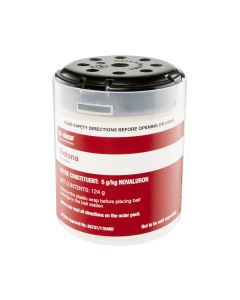 Trelona Termite Bait Cartridge (6 x 124g)5g/kg Novaluron
Trelona Termite Bait Cartridge (6 x 124g)5g/kg NovaluronPack of 6 Trelona Termite Bait cartridges. Each cartridge contains highly palatable compressed puri-cell bait matrix.
-
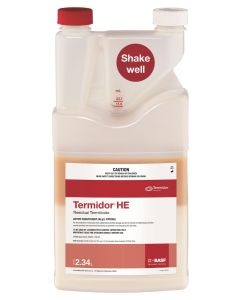 Termidor HE Residual Termiticide 2.34L96g/L Fipronil
Termidor HE Residual Termiticide 2.34L96g/L FipronilTermidor HE is a highly efficient termiticide formulation that makes it faster and easier to provide homes and other buildings with the best available in-ground protection against termites. Termidor HE sets a new benchmark in termite control and convenience for professional pest managers. Termidor HE makes it simple to create a more uniform treated zone with reduced impact on the site.
-
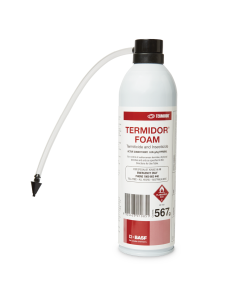 Termidor Foam Termiticide and Insecticide0.05g/kg Fipronil
Termidor Foam Termiticide and Insecticide0.05g/kg FipronilTermidor Foam is a robust dry foam formulation that expands to fill termite nests, galleries and other active workings. Termidor Foam is specifically developed for stage 1 colony elimination with a formulation that maximises the Termidor Transfer Effect.
-
 Coopex Dust Insecticidal Dusting Powder10g/kg Permethrin
Coopex Dust Insecticidal Dusting Powder10g/kg PermethrinCoopex Dust Insecticidal Dusting Powder is registered for the control of cockroaches, ants, fleas, silverfish and bed bugs in and around domestic and industrial premises, food preparation and storage areas. Also for control of mushroom flies in mushroom housing and bees in wall cavities.
-
 Premise 200SC Insecticide 3L200g/L Imidacloprid
Premise 200SC Insecticide 3L200g/L ImidaclopridPremise 200SC Insecticide is an acetyl choline receptor antagonist – chloronicotinyl -Group 4A Insecticide. A non-repellent, no odour termiticide for the post-construction control of subterranean termites. Registered for traditional and foam applications.
-
 Homeguard Termiflex Termiticidal Adhesive and Sealant2g/kg Bifenthrin
Homeguard Termiflex Termiticidal Adhesive and Sealant2g/kg BifenthrinHomeguard Termiflex Termiticidal Adhesive and Sealant is a unique sealant / builder's adhesive that has been impregnated with Biflex. Use Homeguard Termiflex to hold Homeguard sheets in place until other building elements are installed, by fastening joints and corners corners and holding the sheet to bricks, blocks, concrete and other buliding materials in the gaps between nails and other similar fastening devices.
-
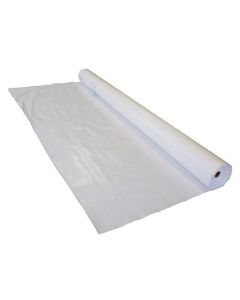 Homeguard Termite and Moisture Barrier (TMB) 4m X 50m1g/kg Bifenthrin
Homeguard Termite and Moisture Barrier (TMB) 4m X 50m1g/kg BifenthrinHomeGuard TMB provides total termite protection for the building under slab and contains 1g/kg Bifenthrin.
-
 Homeguard Protectacote 15L0.65g/L Bifenthrin
Homeguard Protectacote 15L0.65g/L BifenthrinHomeGuard Protectacote, in conjunction with the HomeGuard Precision Termite Management System (the HomeGuard System), forms a continuous waterproof and termite resistant barrier around the perimeter of new slab-on-ground structures and extensions to existing structures.
-
 Homeguard Granular Termiticide (GT) 27L1g/kg Bifenthrin
Homeguard Granular Termiticide (GT) 27L1g/kg BifenthrinHomeGuard® GT is a plastic granular material termite protection product, impregnated with Bifenthrin. HomeGuard® GT is designed to prevent concealed entry of subterranean termites through perimeter cavities and construction voids.
-
 Biflex Aqua Max Insecticide and Termiticide100g/L Bifenthrin
Biflex Aqua Max Insecticide and Termiticide100g/L BifenthrinBiflex AquaMax is the first ever Professional Strength, multi-insecticide and termiticide. Effective on a wide range of common household pests and all termite species in Australia.
-
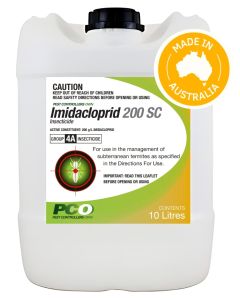 PCO Imidacloprid 200SC200g/L Imidacloprid
PCO Imidacloprid 200SC200g/L ImidaclopridPCO Imidacloprid 200SC is a acetyl choline receptor antagonist – chloronicotinyl Group 4A Insecticide. A non-repellent, no odour termiticide for the post-construction control of subterranean termites. Registered for traditional and foam applications.
Out of stock -
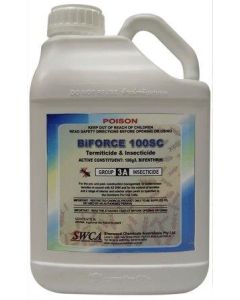 Biforce 100SC Termiticide and Insecticide100g/L Bifenthrin
Biforce 100SC Termiticide and Insecticide100g/L BifenthrinBiforce 100SC Termiticide & Insecticide is a water-based termiticide for pre and post construction management of termites inside and out and for general perimeter application of most crawling insects.
-
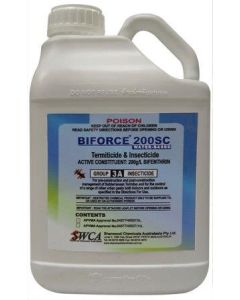 Biforce 200SC Termiticide and Insecticide200g/L Bifenthrin
Biforce 200SC Termiticide and Insecticide200g/L BifenthrinBiforce 200SC Termiticide & Insecticide is a professional strength water-based termiticide for pre and post construction management of termites inside and out.
-
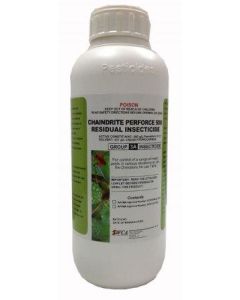 Chaindrite Perforce 500 Residual Insecticide500 g/L Permethrin
Chaindrite Perforce 500 Residual Insecticide500 g/L PermethrinChaindrite Perforce 500 Residual Insecticide is formulated for the control of a broad range of insects in various situations as per the Directions for Use table.
-
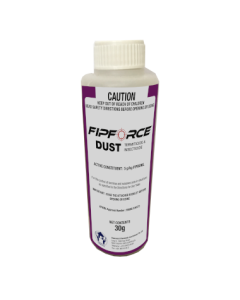 Fipforce Dust Termiticide and Insecticide5g/kg Fipronil
Fipforce Dust Termiticide and Insecticide5g/kg FipronilFipforce Dust Termiticide and Insecticide contains 5g/kg of Fipronil which is toxic to insects by contact or ingestion. FipForce Dust is applied through a hand duster to help in the control of Termites, Nuisance ants and Cockroaches. It has a mineral based carrier which flows extremely well and is less susceptible to moisture than cellulose based dusts. Less moisture build-up means less clogging of the application procedure.
Out of stock -
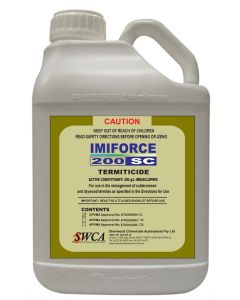 Imiforce 200SC Termiticide200g/L Imidacloprid
Imiforce 200SC Termiticide200g/L ImidaclopridA very effective non-repellent termiticide with systemic activity for soil application to control termites in and around structures.
-
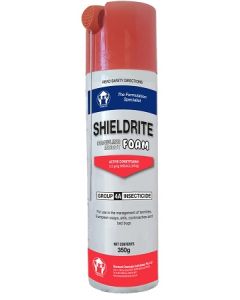 Shieldrite Crawling Insect Foam 350g0.5g/kg Imidacloprid
Shieldrite Crawling Insect Foam 350g0.5g/kg ImidaclopridShieldrite Crawling Insect Foam is a non repellent suspension concentrate formulated into a ready to use foam for the use in the management of pest insects including Termites, European wasps, Ants, Cockroaches and Bed bugs.
-
 Termatrix Above Ground (AG) Station + Bait 100g Pack1g/kg Chlorfluazuron
Termatrix Above Ground (AG) Station + Bait 100g Pack1g/kg ChlorfluazuronA ready to use Termite above ground station for treating termites in active feeding sites.
-
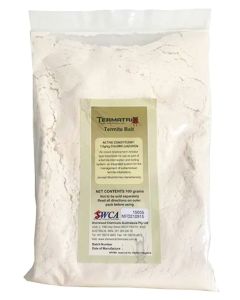 Termatrix Termite Bait 2kg Box (20 x 100g bait)1g/kg Chlorfluazuron
Termatrix Termite Bait 2kg Box (20 x 100g bait)1g/kg ChlorfluazuronTermatrix Termite Bait is a powdered termite bait designed for use with the Termatrix Termite Baiting and Monitoring system. The powdered bait comprises of 1g/kg chlorfluazuron, pure a-cellulose, and feeding stimulants. The 2kg box contains 20 x 100g sachets of termite bait.
-
 Starrdust Pro Duckbill + ‘One-Shot’ 400g20g/kg Permethrin 40:60, 5g/kg Triflumuron
Starrdust Pro Duckbill + ‘One-Shot’ 400g20g/kg Permethrin 40:60, 5g/kg TriflumuronThe StarrdustPRO ‘ONE-SHOT’ is a ready-to-use pod that screws straight onto the StarrdustPRO DUCKBILL Duster head. It is prefilled with 400 grams of premium StarrdustPRO Industrial Strength dusting powder.
-
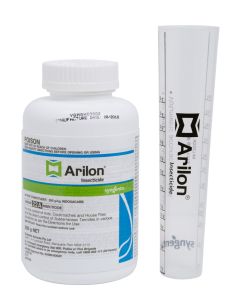 Arilon Insecticide200g/kg Indoxacarb
Arilon Insecticide200g/kg IndoxacarbArilon is a non-repellent insecticide which provides excellent control of ants, cockroaches and other key insect pest species on a variety of interior and exterior surfaces. With its powerful active ingredient and wide-ranging application, Arilon delivers exceptional results against ants, cockroaches, houseflies, and termites—indoors, outdoors, and on various surfaces. Its flexibility and superior efficacy make it indispensable for commercial and domestic pest control programs.
-
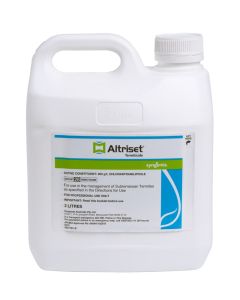 Altriset Termiticide200g/L Chlorantraniliprole
Altriset Termiticide200g/L ChlorantraniliproleAltriset Termiticide is a non-repellent termiticide registered for use in the management of Subterranean Termites that revolutionises termite management by combining rapid feeding cessation, colony elimination, and long-term protection. Altriset is designed for structural termite protection, it ensures safety for applicators and occupants, making it the preferred choice for residential, commercial, and sensitive sites.
-
 Termidor SC Residual Termiticide100g/L Fipronil
Termidor SC Residual Termiticide100g/L FipronilTermidor SC Residual Termiticide and Insecticide provides superior levels of control across subterranean termites, ants, cockroaches, spiders, and flies.
-
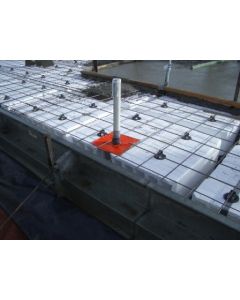 Kordon Collar (100 Pack)0.5g/kg Deltamethrin
Kordon Collar (100 Pack)0.5g/kg DeltamethrinKordon Collar is a service penetration barrier system. Kordon collars are registered for the protection of buildings and structures against subterranean termites in accordance with AS3660. Available in 2 sizes
-
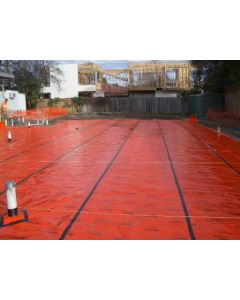 Kordon TMB Underslab Termite Barrier0.5g/kg Deltamethrin
Kordon TMB Underslab Termite Barrier0.5g/kg DeltamethrinKordon TMB is a complete underslab barrier, providing both termite and moisture protection.
-
 Homeguard Perimeter DPC White Sheeting (Damp Proof Course)1g/kg Bifenthrin
Homeguard Perimeter DPC White Sheeting (Damp Proof Course)1g/kg BifenthrinHomeGuard DPC provides total termite protection for the building perimeters. HomeGuard DPC (Damp Proof Course) is a tough, 500 micron, embossed polymer sheeting impregnated with Bifenthrin and when used as a component of a termite management system, meet the requirements of AS 3660.1 approved in accordance with and AS 3660.3 – Termite Management.
-
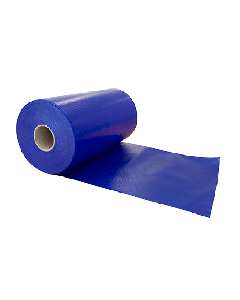 Homeguard PB Blue Sheeting1g/kg Bifenthrin
Homeguard PB Blue Sheeting1g/kg BifenthrinHomeGuard PB provides total protection for all building perimeters from subterranean termites. HomeGuard PB is a high impact, 300 micron, embossed polymer sheeting product that is impregnated with Bifenthrin and when used as a component of a termite management system, meet the requirements of AS 3660.1 approved in accordance with and AS 3660.3 – Termite Management.
-
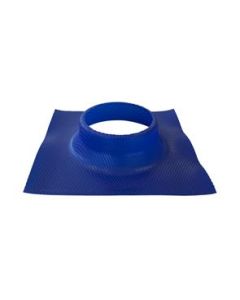 Homeguard Flexi CollarBifenthrin
Homeguard Flexi CollarBifenthrinHomeguard's unique flexible collars are impregnated with bifenthrin. They physically stop attacking termites entering a structure via penetration pipes; they will also kill termites that contact the collar and repel them away from the penetration. Available in 100mm, 80mm, 50mm, 40mm, 25mm
-
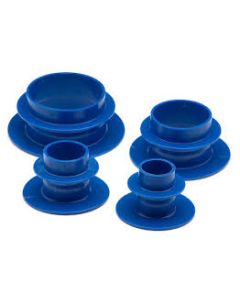 Homeguard CollarBifenthrin
Homeguard CollarBifenthrinHomeguard Collars are impregnated with bifenthrin. The collars physically stop attacking termites entering a structure via penetration pipes and will also kill termites that contact the collar and repel them away from the penetration. Available in 40, 50, 80 and 100 mm diameters.
-
 Biflex Ultra Lo-Odour 100EC Termiticide & Insecticide100g/L Bifenthrin, 533g/L Liquid Hydrocarbons
Biflex Ultra Lo-Odour 100EC Termiticide & Insecticide100g/L Bifenthrin, 533g/L Liquid HydrocarbonsBiflex Ultra-Lo-Odour Termiticide and Insecticide is a cost-effective, broad spectrum, long residual, liquid insecticide and termiticide for use as an internal and external treatment of a wide range of pests.
-
 Fipforce HP Insecticide and Termiticide100g/L Fipronil
Fipforce HP Insecticide and Termiticide100g/L FipronilFipforce HP is an insecticide and termiticide in a SC (suspension concentrate) formulation that provides effective, odourless. long-lasting, non-repellent control of termites.
-
 Trelona ATBS (Advanced Termite Baiting System) Kit - Carton of 165g/kg Novaluron | Active on Application System
Trelona ATBS (Advanced Termite Baiting System) Kit - Carton of 165g/kg Novaluron | Active on Application SystemThe Trelona ATBS (Advanced Termite Baiting System) is a carton of 16 pre-assembled active inground termite bait stations ready to be installed. They contain pre-loaded actives with 2 x 124 g bait cartridges per station.
-
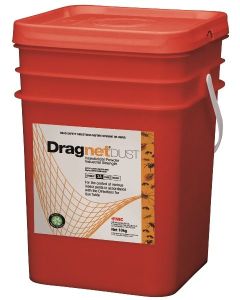 Dragnet Dust Insecticidal Powder2% Permethrin
Dragnet Dust Insecticidal Powder2% PermethrinDragnet Dust Insecticidal Powder is a 2% permethrin, broad-spectrum insecticide dust designed to reach into limited access areas. Dragnet Dust's super-fine formulation gives excellent coverage and spread. It is registered for the control of ants, spiders, fleas, cockroaches, silverfish, bed bugs, wasps, and bird mites in domestic, institutional & industrial premises. Also for the control of hide beetles, mushroom, sciarid flies and Potato moths.
-
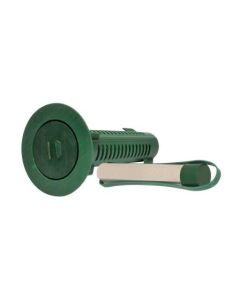 Sentricon Always Active Ready to Install (RTI) Stations - Carton of 285g/kg Hexaflumuron
Sentricon Always Active Ready to Install (RTI) Stations - Carton of 285g/kg HexaflumuronA carton of Sentricon Always Active Ready-To-Install (RTI) Stations contains 28 units of Sentricon In-Ground Stations pre-assembled with Sentricon Always Active IG Termiticide Rods.
-
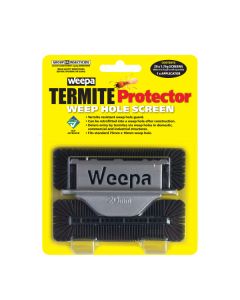 Weepa Termite Protector Weep Hole Screen (PK20)Bifenthrin infused flexible LDPE
Weepa Termite Protector Weep Hole Screen (PK20)Bifenthrin infused flexible LDPEPatented termite-resistant weep hole guard manufactured from bifenthrin infused plastic. Proven to deter termite entry through existing weep holes for up to 2 years as part of a termite management plan.
-
 Greenzone Termite Paint2g/L bifenthrinGreenzone Termite Paint is a unique and innovative solution that provides a long-lasting protective barrier against termites and other pests. The paint is easy to apply, making it an ideal solution for both residential and commercial properties.
Greenzone Termite Paint2g/L bifenthrinGreenzone Termite Paint is a unique and innovative solution that provides a long-lasting protective barrier against termites and other pests. The paint is easy to apply, making it an ideal solution for both residential and commercial properties. -
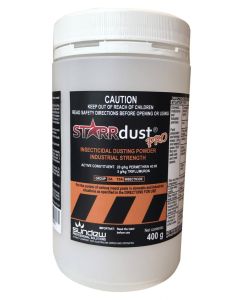 Starrdust PRO One-Shot Insecticidal Dust 400g20g/kg Permethrin, 5g/kg Triflumuron
Starrdust PRO One-Shot Insecticidal Dust 400g20g/kg Permethrin, 5g/kg TriflumuronThe Starrdust PRO One-Shot Insecticidal Dust 400g is an industrial-strength dust designed for use with the Starrdust PRO Duckbill Duster. It is a ready-to-use broad-spectrum insecticide with a unique formulation. It controls a wide range of insect pests including cockroaches, silverfish, spiders, ants, fleas, carpet beetles, bed bugs, European wasps, feral honey bees, bird mites, subterranean termites, hide beetles, millipedes, woodlice and clothes moths.
-
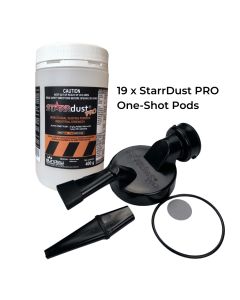 Starrdust PRO One-Shot Insecticidal Dust 19 x 400g + Duckbill20g/kg Permethrin, 5g/kg Triflumuron
Starrdust PRO One-Shot Insecticidal Dust 19 x 400g + Duckbill20g/kg Permethrin, 5g/kg TriflumuronA convenient kit of 19 x Starrdust PRO One-Shot Insecticidal Dust 400g Pods and a bonus Duckbill Duster. StarrDust PRO is an industrial-strength dust designed for use with the Starrdust PRO Duckbill Duster. It is a ready-to-use broad-spectrum insecticide with a unique formulation. It controls a wide range of insect pests including cockroaches, silverfish, spiders, ants, fleas, carpet beetles, bed bugs, European wasps, feral honey bees, bird mites, subterranean termites, hide beetles, millipedes, woodlice and clothes moths.
-
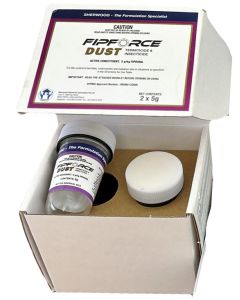 Fipforce Dust Termiticide and Insecticide (Pack of 2 x 5g)5g/kg Fipronil
Fipforce Dust Termiticide and Insecticide (Pack of 2 x 5g)5g/kg FipronilFipforce Dust Termiticide and Insecticide contains 5g/kg of Fipronil which is toxic to insects by contact or ingestion. FipForce Dust is applied through a hand duster to help in the control of Termites, Nuisance ants and Cockroaches. It has a mineral based carrier which flows extremely well and is less susceptible to moisture than cellulose based dusts. Less moisture build-up means less clogging of the application procedure.
-
 Starrdust PRO Insecticidal Dust20g/kg Permethrin 40:60, 5g/kg Triflumuron
Starrdust PRO Insecticidal Dust20g/kg Permethrin 40:60, 5g/kg TriflumuronStarrdust PRO Insecticidal Dust is a ready-to-use, broad spectrum insecticide with a unique formulation. It controls a wide range of insect pests including cockroaches, silverfish, spiders, ants, fleas, carpet beetles, bed bugs, European wasps, feral honey bees, bird mites, subterranean termites, hide beetles, and 3 new pests not on any dust product in Australia – millipedes, woodlice and clothes moths.
-
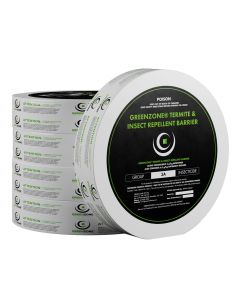 Greenzone Termite and Insect Repellent Barrier2g/kg Bifenthrin and 6.3g/kg Antimony Trioxide
Greenzone Termite and Insect Repellent Barrier2g/kg Bifenthrin and 6.3g/kg Antimony TrioxideGREENZONE® Termite and Insect Barrier is an innovative technology which integrates a compressible foam substrate with bifenthrin creating significant savings in labour and materials to install a combined termite repellent and compressible foam layer.
-
 Trelona Active Monitoring System Kit (Carton of 16 Stations)5g/kg Novaluron | Active Monitoring System
Trelona Active Monitoring System Kit (Carton of 16 Stations)5g/kg Novaluron | Active Monitoring SystemThe Trelona Active Monitoring Kit is a carton of 16 pre-assembled active inground termite bait stations ready to be installed. Each bait station contains 1 x monitoring timber and 1 x 124 g active bait cartridge per station.
-
 Agenda Termite Bait (6 x 170g)1 g/kg Chlorfluazuron
Agenda Termite Bait (6 x 170g)1 g/kg ChlorfluazuronAgenda Termite Bait is an insect development inhibitor type insecticide for use in a termite interception and baiting system as part of an integrated system for the management of subterranean termite infestations (except Mastotermes darwiniensis).
JOIN OUR NEWSLETTER NOW!
Be the first to hear about the latest specials, products, tips and ideas.

